How to prevent and treat cannabis light burn?

- 1. How to identify light burn
- 1. a. Bud bleaching
- 1. b. Yellow leaves
- 2. Light placement
- 3. What is light burn?
- 4. How to identify light burn?
- 5. How to prevent light burn?
- 5. a. Use a lux meter
- 5. b. Low-stress training
- 5. c. The tie-down method
- 5. d. Scrog
- 6. Cannabis light burn recovery
- 7. What can influence light burn?
- 7. a. Low humidity
- 7. b. High temperatures
- 8. In conclusion
Light burn or light bleaching is a serious problem if you’ve got a room full of cannabis plants. Light serves as food for the plants, but it can also be an issue if it goes overboard. Think of it this way – humans need food for energy, but what happens if you eat too much? Yep, you’ll have several problems from obesity to diabetes. Similarly, cannabis plants use light as food, but if you install too many lights or hang them too close to the plants, you may end up bleaching your plants.
Before proceeding, it helps to know the difference between light burn and light stress. As the name suggests, light burn results in tissue damage directly resulting from the heat emitted from a light source. While some lights, such as LEDs, produce very little heat, other types of lamps generate enough to burn leaves when they’re in close enough proximity. In contrast, light stress (another condition that can have a negative effect on plant performance and yields), is caused by an excess of light, without heat playing a major role in the equation.
Technically speaking, feminized seeds cannot receive too much light. However, plants don’t conduct photosynthesis for free! In order to convert light into vital sugars, plants also need adequate amounts of water and carbon dioxide. When exposed to a lot of light, plants need enhanced levels of these resources. This is why some growers add supplemental carbon dioxide to their growing space. The accelerated growth that occurs under strong lights also requires higher amounts of key macronutrients and micronutrients. When a grower subjects a plant to a very strong light source but doesn’t increase water, carbon dioxide, and nutrients, plants undergo light stress. The symptoms of this condition include yellowing and browning leaves. Now, you’re aware of the key differences between both light stress and light burn. So, let’s learn about the latter! If you notice your plants struggling, keep reading to figure out how to prevent and treat cannabis light burn.
1. How to Identify Light Burn
Light burn is fairly easy to identify as the symptoms are evident. When dealing with light burn, your cannabis plants will either yellow almost white leaves or flowers. Learning about the signs of different conditions will help you excel as a grower, whether you’re a beginner at the start of your journey or a green veteran with years of cultivation experience. Getting to know what to look out for will help you quickly identify a host of different problems, including the signs of specific pests and diseases and nutrient deficiencies. Once you know what the symptoms look like, you’ll know exactly how to go about treating your precious plants.
The same applies to light burn. This condition displays some very recognizable symptoms that serve as prompts to rearrange things within your growing space. Catch these signs earlier and you’ll have the power to minimize any damage and increase the chances of healthy plants and a successful harvest. So let’s understand why this happens.
Bud Bleaching
One of the easiest symptoms that’ll help you identify light burn is the bleaching of the buds. This usually happens on top buds when the lights are too close to the canopy, making flowers look completely white or albino. Despite looking interesting, in most cases, your buds will lose potency and flavor as the high-intensity lighting will degrade the terpenes and cannabinoids, making your bud taste like hay in some cases. Remember that it’s not only light burn, excessively hot temperatures will also cause terpenes and cannabinoids to degrade.
Yellow Leaves
Symptoms of light burn also include yellowing of the fan leaves but it could be harder to identify your plants are suffering from light burn this way as the yellowing of the leaves can also be a nutrient deficiency. The main thing you should keep in mind is that nutrient burn usually starts at the bottom while light burn will appear at the top and the leaves will not appear sick, only discolored. But it’s not just these particular phytochemicals that become damaged and lost. The white color starts to occur because chlorophyll itself becomes damaged by the heat of the lamp.
In case you weren’t aware, chlorophyll is a pigment found within plant tissue that is at the center of photosynthesis. It appears green to the human eye because it reflects green light. When damaged, plant tissue appears white and yellow instead of green. Thankfully, light burn is almost always localized to the tallest part of the canopy that is the closest to the hot light source. Once you readjust your light distance, you’ll give some of the tissue at the top of the canopy the chance to recover.
2. Light Placement
It doesn’t matter if you’re growing under HPS or LEDs, you should always follow the manufacturer’s recommendations because if you don’t have reflective walls or a lot of lights, the light intensity will be reduced and can end up affecting the yields.
Reflective walls
Although the distance from your plants can affect the yields, these can change when using reflective walls because they bounce the light back to your plants, reducing the light walls when you move the lights higher.
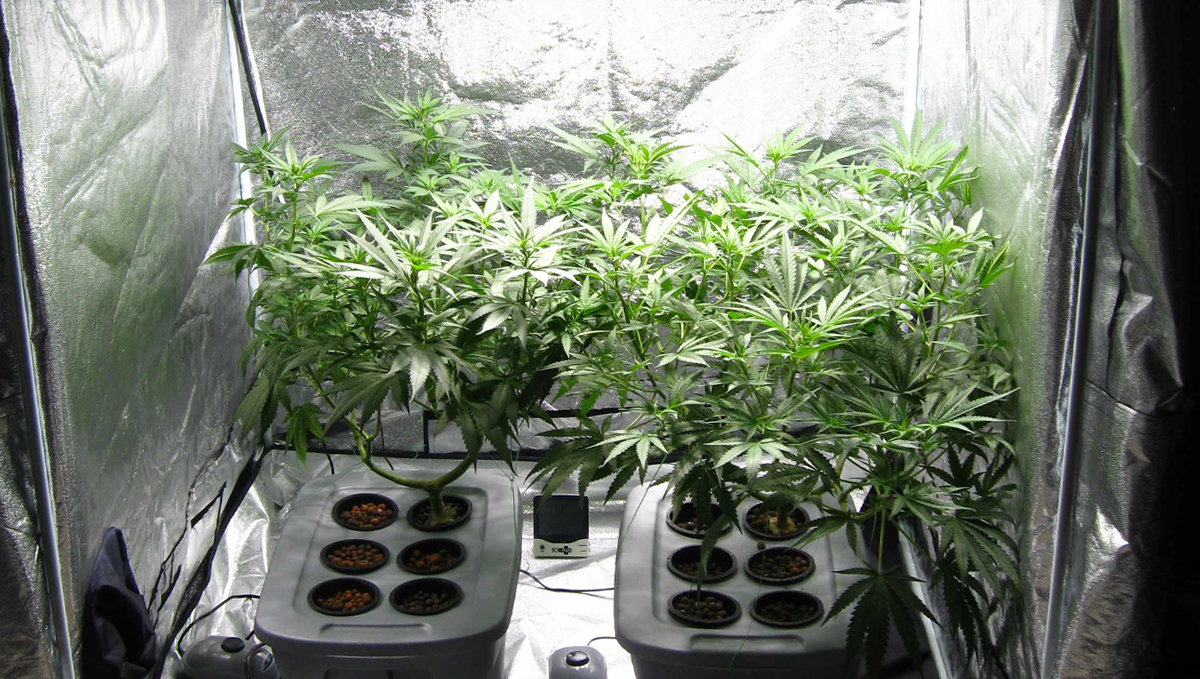
This means that when using effective reflective walls, you can place the lights higher without losing as much light intensity as you would when growing without them because when light bounces back, it will reach your plant from different angles, allowing even deeper penetration into the canopy.
Overlaying lights
If you’re using many lights in a room with reflective walls, it’s more effective to hang them higher because your plants will get light from many angles, enhancing light penetration and improving the yields.
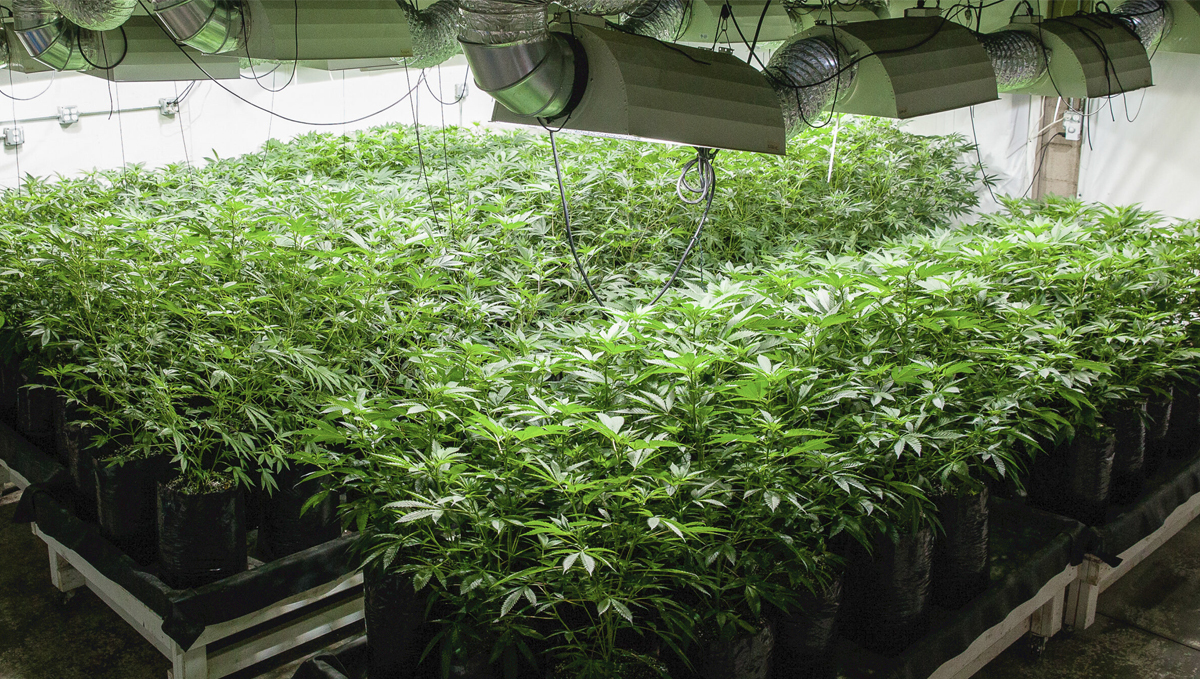
Obviously, this is more suited for commercial growers who can afford to have grow rooms with several lights, although, some home growers have big grow tents and can benefit from having reflective walls and several light fixtures.
3. What Is Light Burn?
Light burn is nothing but light bleaching, you’ll notice that the leaves too close to the light turn white or look bleached. Plants growing outside cannot suffer from light burn because the sun is too far away from the earth to burn the plants and cannabis has evolved for centuries and has adjusted to the sunlight enough to not get burnt.
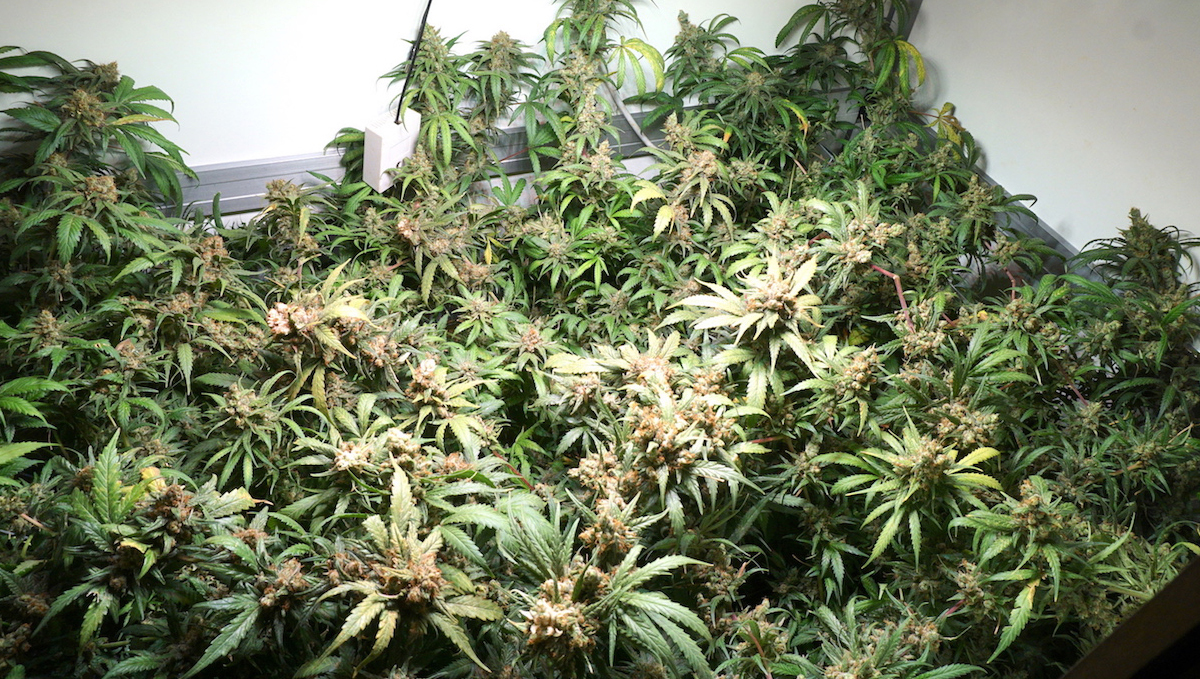
But, weed light burn can happen indoors. When the leaves and even the buds begin to look white or burnt when the lights are hung too close to the plants, this means the heat is so high that the plants cannot tolerate it. Even though white buds look amazing when you look at them, but it’s a sign that the buds are damaged. Since the light is too close to the buds, the resin along with the cannabinoids are destroyed. Now, you probably already know that heat kills plants, and buds are no exception, in fact, not only will the buds be useless for both medicinal and recreation users, but the taste goes for a toss too and the fragrance deteriorates as well.
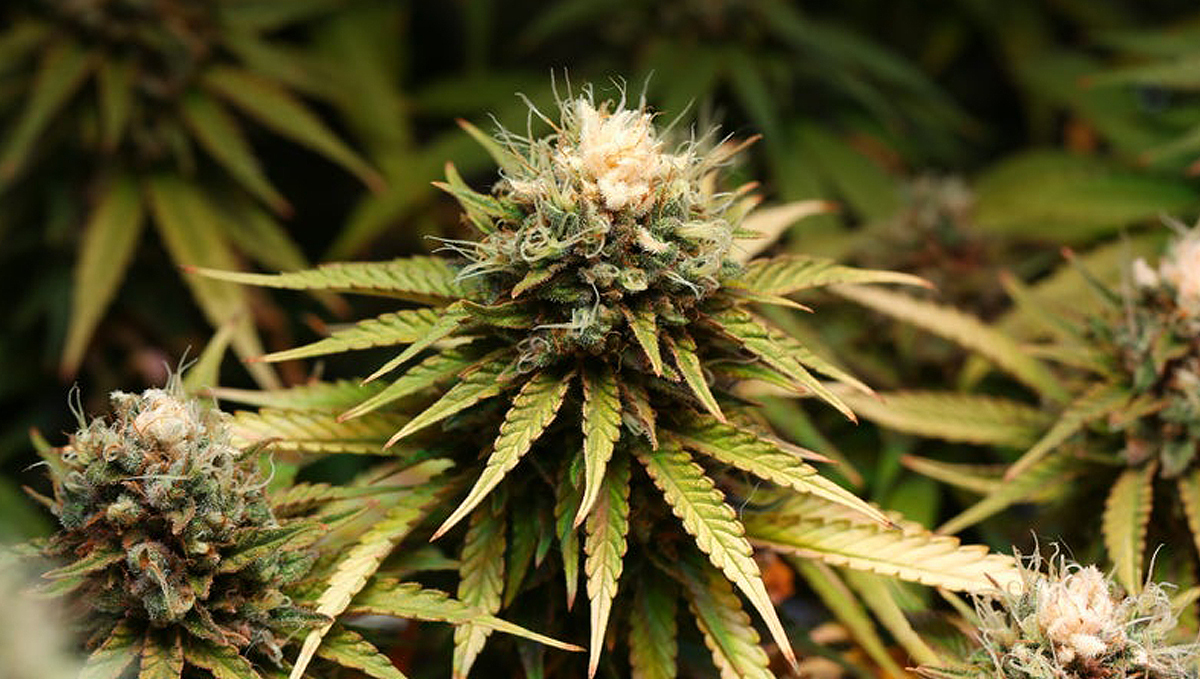
Yellow leaves can also indicate light burn at times, but do not get confused between nitrogen deficiency and light burn because they look the same. With nitrogen deficiency, though, yellowing of the leaves start from the bottom and move towards the top, also, the leaves are limp and fall off from the plant without any effort. On the other hand, if they are suffering from light burn, the leaves feel crispy and are harder to pluck from the plant, leaves turning brown and crisp is an indication of light burn too. It’s a combination of heat and too much light that fries the leaves and render them useless to the plant.
4. How To Identify Light Burn?
Light burn symptoms in the early stages can easily be mistaken for heat stress symptoms or nitrogen deficiency so it’s better to make sure what’s really going on with your plants before treating them. If your plants are suffering from light burn you’ll start to see the following symptoms:
- Leaves pointing upwards.
- Bleaching on the leaves and buds, which can present in white or yellow in the parts closest to the light.
- Leaves turn yellow while the veins remain green.
5. How To Prevent Light Burn?
Prevention is far better than cure, they say. Thus, you must try to prevent light burn rather than trying to cure it. First off, light burn depends on the type of light you’re using, for instance, a CFL hung even 10 inches away from the plant will not damage the plant and the same applies to fluorescent or T5 lights because they aren’t that powerful and don’t emit a lot of heat. However, some HID and LED lights positioned even 25cm away from the plants can ultimately kill them.
| HPS | Distance |
|---|---|
| 150w | 20cm |
| 250w | 30cm |
| 400w | 40cm |
| 600w | 50cm |
| 1000w | 60cm |
Secondly, determine the wattage of the lighting you’re using. For example, a 50W LED light may not be too harmful, but a 1000W LED will have disastrous consequences if you place it too close to the plants. HID lights are too powerful even if the wattage is low, another problem is that they emit way too much heat that can be unbearable to the plants. Having said that, remember that you can’t hang the lights too far away either. If the plants are very far away from the light, they will not have enough food to grow properly! You can consider both HPS and Metal Halide lights in the same category.
| LED | Distance |
|---|---|
| 200-400w | 13cm |
| 400-600w | 58cm |
| 600-800w | 83cm |
| 800-1000w | 90cm |
| +1000w | 100cm |
When in doubt, read the directions provided by the manufacturer as well and, now that the LEDs are available as COB LEDs as well, the distance between the lights and plants may be different. COB LEDs are way too strong. It’s better to be safe and place the plants a few inches further away in the vegetative stage to check how they fare. If you notice that they are struggling, it’s an indication that you must move the lights away. However, if you notice that they are stretching too much and go limp, it’s time to place the lights closer. Now, if everything fails and the plants do not recuperate, you can remove a few lights. Keep in mind that about 100w per square meter is enough light for plants and, if there’s no roof space and you’re unable to move the light away, you can train your plants using any LST method.
Use a Lux Meter
If you don’t want to keep guessing, it’s highly recommended to use a lux meter to measure how much light your plants are being exposed to. For those of you who have never heard of this term, lux is used to measure the luminous lux per square meter. Anyways, a lux meter will basically give you the intensity of the light and are essential for growers who want to provide the right amount of light as this device will help you determine if your plants are getting too much light, too little, or enough light.
Keep in mind that it’s recommended between 35.000 - 70.000 lux for plants in the vegetative stage and 55.000 - 85.000 during the flowering stage. If you’re in doubt if the symptoms your plants are showing are caused by light burn, make sure to grab a lux meter and measure it. If the lux is too high or too low, make sure to adjust the light distance to the canopy and that should fix your problem.
And what about autoflowers?
Autoflowers still need plenty of light, which means that their lux requirements are basically the same as photoperiods, obviously, this is strain-dependent but you can follow this as a guideline.
| Recommended Lux for Autoflowers | |
|---|---|
| Seedling Stage | 5.000 - 7.000 lux |
| Vegetative Stage | 15.000 - 50.000 lux |
| Flowering Stage | 45.000 - 65.000 lux |
Keep in mind that autoflowers should never get more than 75.000 lux unless you’re injecting CO2 or are dealing with a strain that can take it as most autoflowers will show symptoms of light burn under 75.000 lux or more. And remember that this is just a guideline and can vary depending on your setup and the light fixture you’re using, but it’s a base that can help you keep your autoflowers happy and healthy.
Low-stress Training
Low-Stress Training is a method where you bend the stems to the side of the container so that the light penetrates into the canopy. Since you’re going to bend the stems down, the distance between the lights and plants will automatically reduce. But, note that the stems try their best to get back up and face the light, so you’ll need to use strong cable tires or wires that hold them in place. As long as the wires don’t hurt the plants, you can LST them as much your heart desires. LST works perfectly for autoflowers, but use it only during the vegetative stage. At the end of the day, LST is a technique that can stress your plants, so you don’t want to do anything stressful to the plant when it’s flowering.
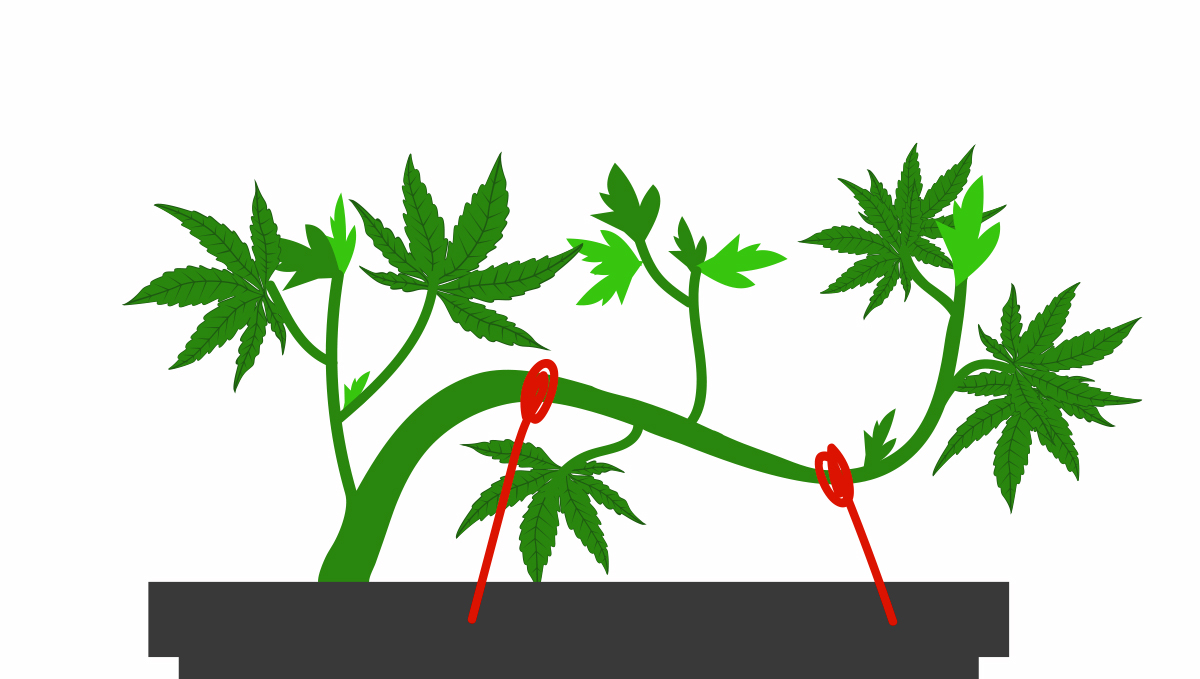
The Tie-down Method
As said above, LST is a method where you bend down the branches to control height and model your plant’s structure to better fit your grow tent and the tie-down method is the most known and cheapest of them all. This method consists of tying down the branches to the sides, shaping your plant sideways instead of growing vertically, and basically reaching the same results as with SCRoG but allowing you to model the plant structure as you wish to.
SCRoG
Screen of green (aka SCRoG) is an LST technique designed to control the height and improve yields, similar to the tie-down method, it consists of bending down the branches to achieve a well-spread canopy, allowing the light to reach all the flowering sites equally, thus improving yields and plant growth.
6. Cannabis light burn recovery
There’s no light burn treatment or a way to recover from cannabis light burn, even if your buds are bleached, you can still smoke them, also, you can remove the bleached part and smoke the rest. It doesn’t matter if it’s a LED light burn or an HPS light burn, marijuana light burn doesn’t mean that your buds aren’t fit for consumption but they won’t get you too high or have a pleasant taste or aroma.
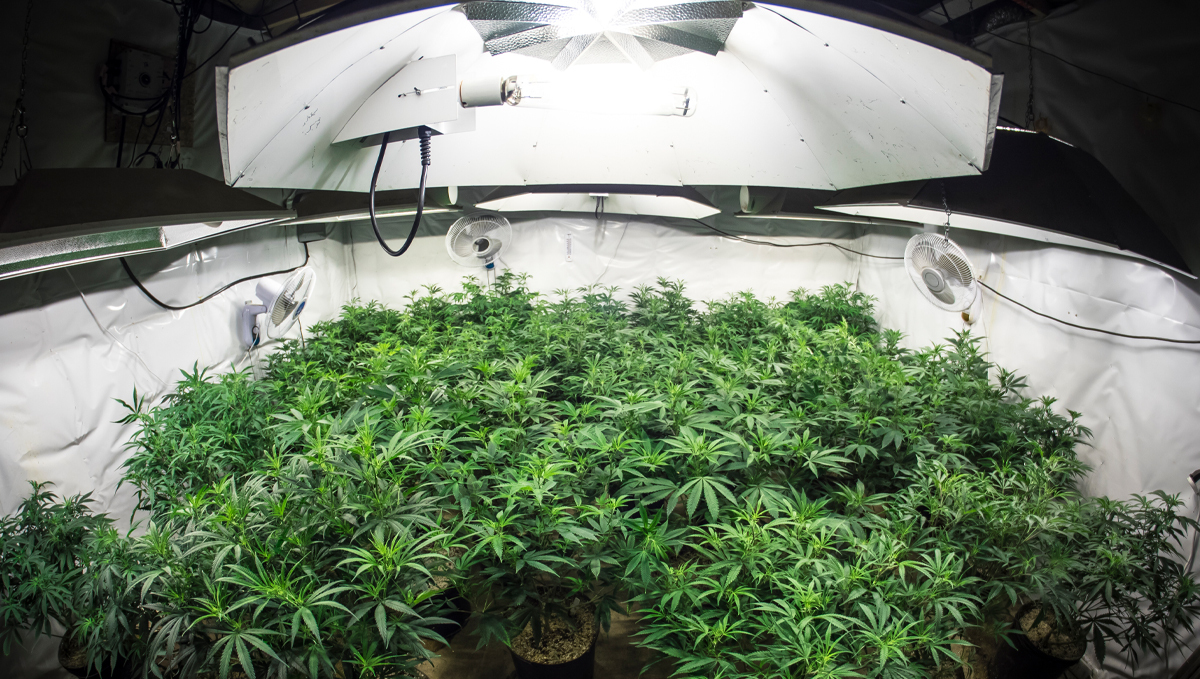
Sometimes even, the leaves turn completely white, in such cases, the damage is so much that it’s too late to save them, now, this doesn’t mean you should toss your weed plants in the garbage but you will not be able to reverse the damage done. If you notice the first few signs of the leaves turning white, you’re in luck. For one, you can move the lights away and water the plants to help them restore all the moisture they have just lost, you can also install cooling fans to reduce the heat produced by the lights.
This is also why most growers shy away from HID lights. HID lights are powerful, no doubt, but the heat released is just too much for the plants and you’ll be forced to use powerful fans. With LEDs, though, the heat isn’t is as much as HIDs and since most of the new LEDs come with cooling fans attached to the unit, heat dissipation will not be a big headache.
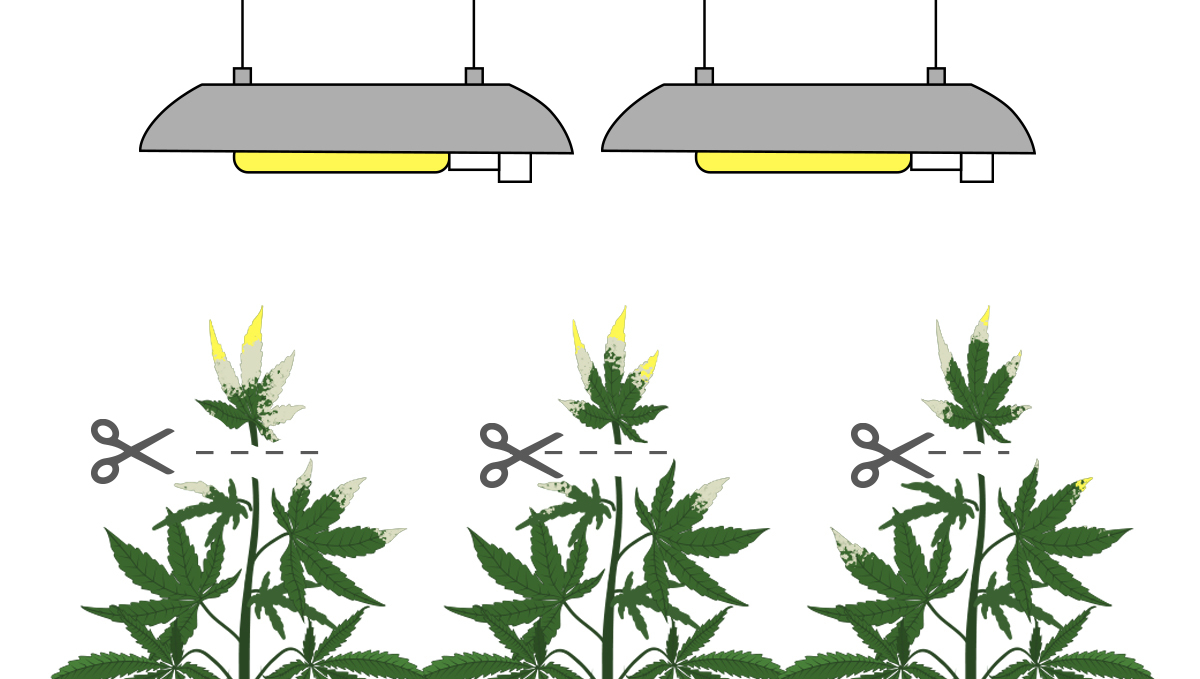
Determine the leaves of the plant turning white and pluck them off from the plant because they are going to stress the plant even further. If the plants are young and still in the vegetative stage, it might help to cut off the tops. This method – also known as Topping and Fimming – will also reduce the distance between the lights and the plants considerably. Of course, the tops will grow back again, but you can use a combination of both LST and topping to ensure that the plants aren’t too close to the lights at all.
7. What Can Influence Light Burn?
Now, if you’re suffering from light burn there are some other things that you should have in mind, usually, when your plants are getting light burned, it’s more likely that your grow space has a high temperature and a low humidity.
Low humidity
The ideal humidity will differ depending on the stage your cannabis is in, the humidity should start at around 70% in the vegetative stage, decrease to around 60% during the pre-flower and first half of flowering and then reach around 50% in the last weeks of the flowering stage.
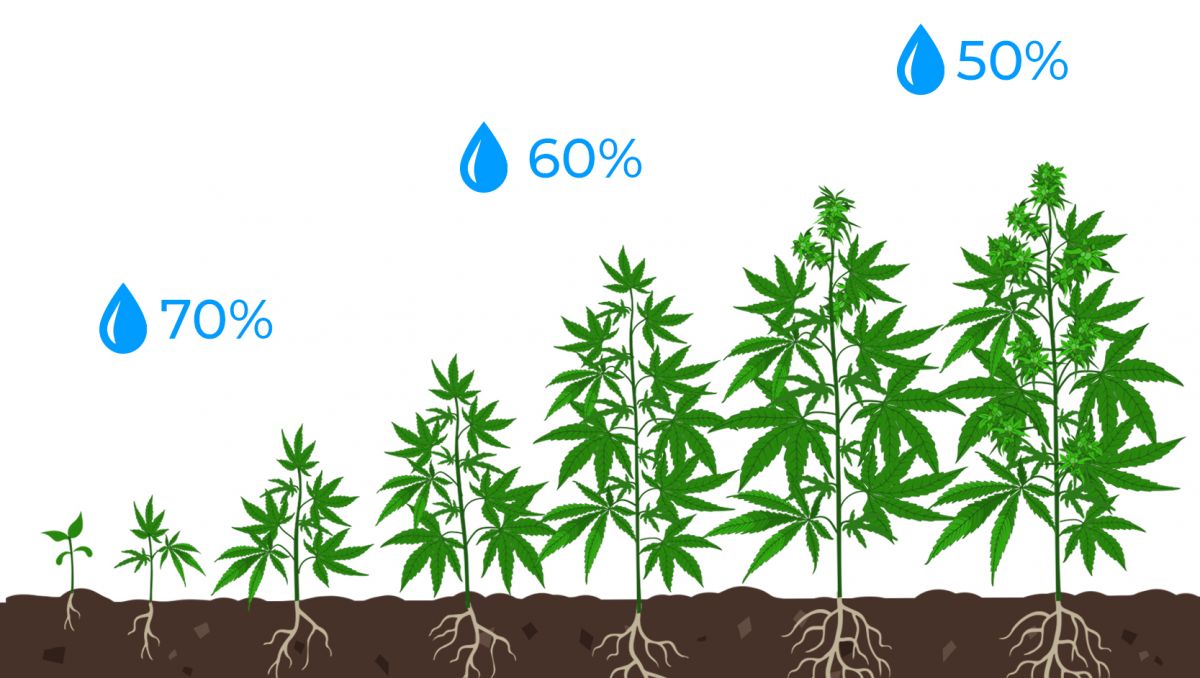
If you fail to adjust the relative humidity, your plants can get heat-stressed and can be more vulnerable to light burn, so it’s essential you have a thermohygrometer to measure the humidity and temperature, and then adjust it correctly.
Solution
If you’re growing outdoors you don’t need to worry about light burn, obviously, the humidity can affect how your plants grow but they won’t suffer from light burn. Now, if you’re growing indoors, you can use a humidifier if you’re looking for a long term solution and want to invest in your grow space but you can also fill a couple of buckets with water and place them inside your grow tent, this isn’t the ideal method and can attract bugs but if you’re looking for a cheap and simple way to increase humidity levels for a short time, this is the way to go.
High temperatures
The best range for growing cannabis is between 18-25°C, if you’re having light burn, it’s likely you’re having problems maintaining the proper temperature. Have in mind that your plants will show you they’re not happy even before the symptoms appear, so it’s essential you keep proper growing conditions if you want to grow cannabis without problems.
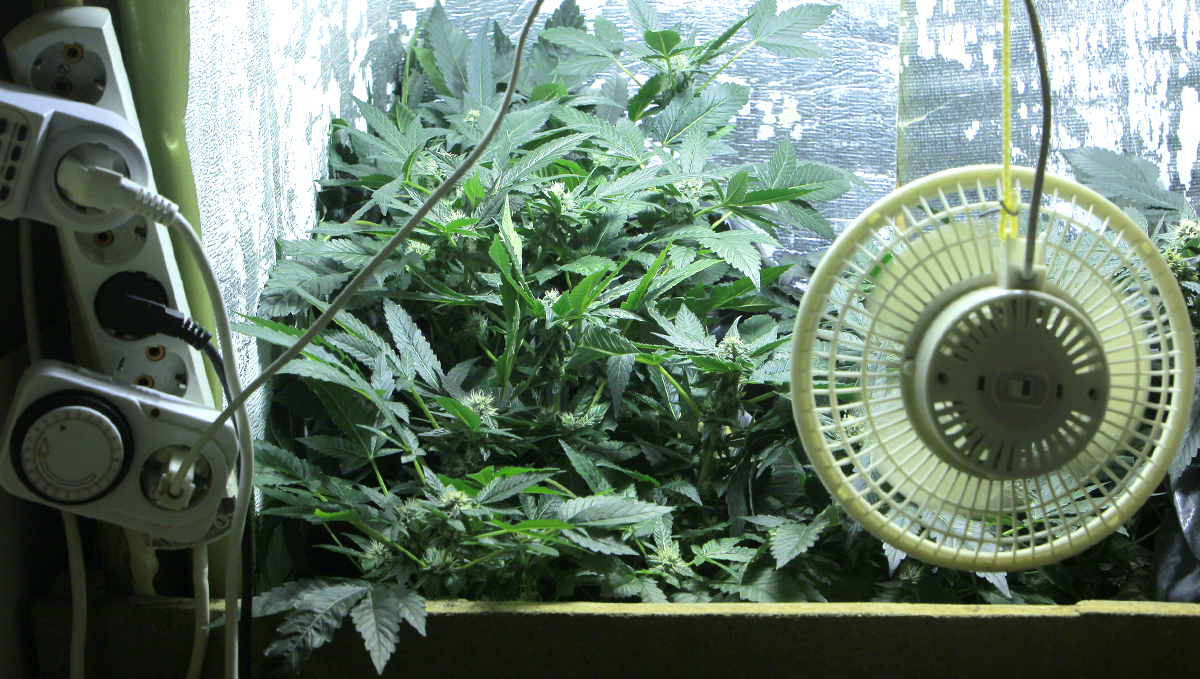
Solution
The solution for a high temperature usually revolves around increasing air circulation and hanging your lights higher, if this is not possible, you will have to recur to an AC but in most cases, you’ll be able to solve it without having to spend too much. Another way is to water more often with less water, this will ensure your plants are always hydrated and will be able to deal with the high temperature better but it won’t be as effective as having your lights at the right height or increasing air circulation.
8. In conclusion
Have in mind that cannabis light burn is not a disease like mold or the Tobacoo mosaic virus, light burn or light bleach is a symptom that appears when your light fixture is too strong light or the colas grow too much and touch the lights. Now, this is more common when growing with light bulbs by can also happen with top-quality LEDs so make sure you have enough horizontal space and know approximately how tall your plants will grow before starting your grow cycle.
This isn't a huge problem because it can be solved with LST techniques or just by rating your light fixtures, but as always, it's better to prevent than to remedy. The distance between the light fixture and the canopy is vital for plant growth, if you have the lights too high your plants won’t grow properly and if they’re too close they can end up harming your plants so you need to experiment to find the sweet spot. If you have grown cannabis with both HP and LEDs, feel free to share your tips and tricks with fellow growers, leave a comment in the comment section below!














Comments